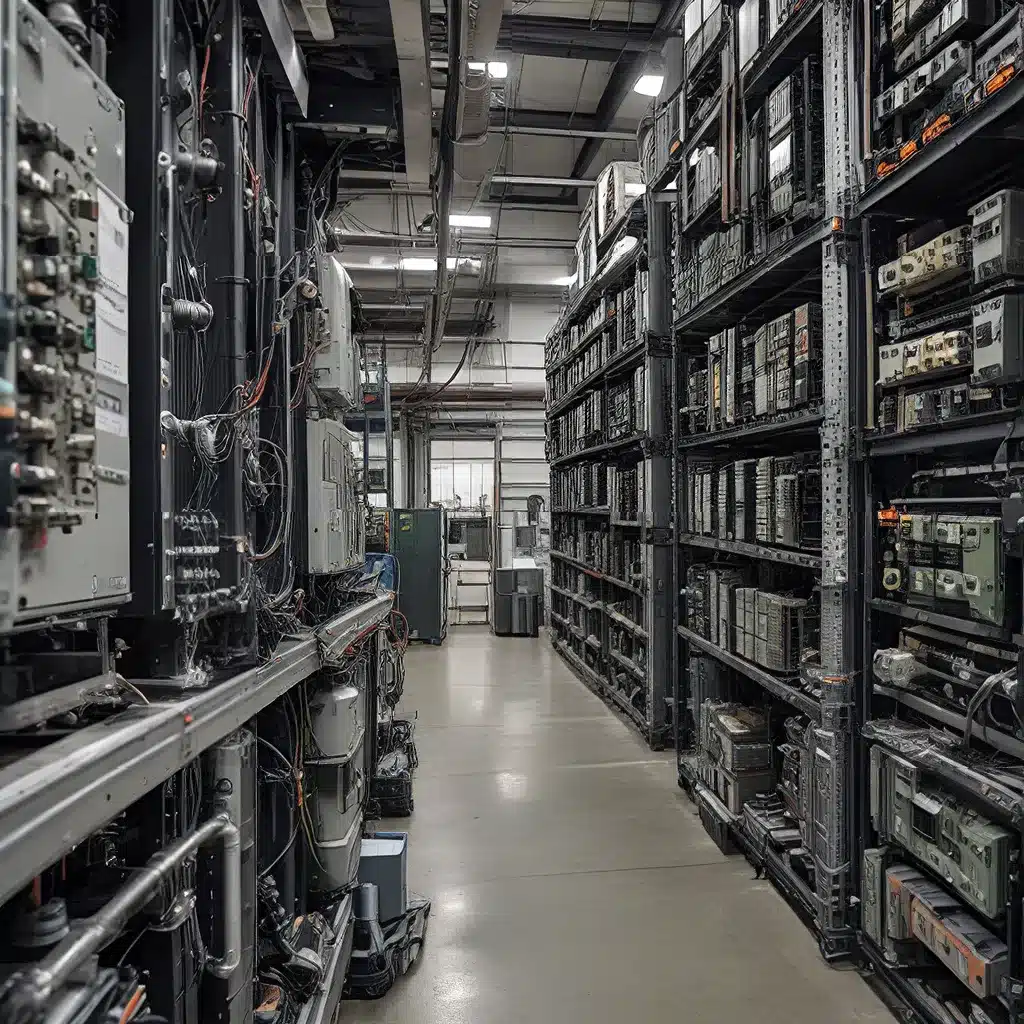
The Internet of Things (IoT) has revolutionized the way we interact with the world around us, and the sensor networks powering IoT applications have become the backbone of this transformation. From smart homes and cities to industrial automation and environmental monitoring, sensor networks are enabling unprecedented levels of connectivity, data-driven decision making, and intelligent control.
As the industrial IoT (IIoT) continues to gain momentum, the need for reliable and scalable sensor network architectures has become paramount. Industrial environments pose unique challenges, such as harsh operating conditions, the requirement for real-time responsiveness, and the need to ensure data integrity and security. Addressing these challenges requires a holistic approach that combines cutting-edge sensor technologies, distributed algorithms, and edge computing capabilities.
Sensor Network Design for Industrial IoT
At the heart of any reliable IIoT system are the sensor nodes responsible for data acquisition and real-time monitoring. These nodes must be designed to withstand the rigors of industrial environments, while also optimizing for factors like power consumption, processing capabilities, and communication bandwidth.
IEEE Transactions on Industrial Informatics has been at the forefront of research in this domain, publishing cutting-edge studies on sensor network architectures, industrial communication protocols, and embedded systems design. These advancements have paved the way for the development of robust, self-healing sensor networks capable of adapting to changing conditions and minimizing downtime.
One key aspect of sensor network design is the optimization of energy consumption. Industrial environments often lack easy access to power sources, making energy-efficient sensor node architectures a critical requirement. Researchers have explored techniques like duty-cycling, energy harvesting, and dynamic resource allocation to extend the battery life of sensor nodes and ensure the reliability of the overall system.
Distributed Algorithms for Sensor Network Coordination
As sensor networks grow in scale and complexity, the need for distributed coordination algorithms becomes increasingly important. These algorithms enable sensor nodes to self-organize, share information, and make autonomous decisions without the need for centralized control.
Recent research has focused on the development of consensus-based and multi-agent algorithms for tasks like data aggregation, event detection, and fault tolerance. By leveraging the computational power of individual sensor nodes, these distributed approaches can achieve scalability, resilience, and low latency in industrial IoT applications.
Moreover, the integration of machine learning and artificial intelligence techniques has further enhanced the capabilities of distributed sensor networks. Predictive analytics, anomaly detection, and adaptive control algorithms can be deployed at the edge, enabling sensor nodes to make intelligent decisions and respond quickly to changes in the environment.
Security and Privacy Considerations
One of the primary concerns in the industrial IoT domain is the security and privacy of the sensor data and the overall system. Industrial environments are often vulnerable to cyber-attacks, which can have catastrophic consequences in terms of operational disruption, asset damage, and data breaches.
Researchers have addressed these challenges by developing secure communication protocols, authentication mechanisms, and encryption techniques tailored to the specific requirements of industrial IoT. Sensor Networks have played a crucial role in this effort, providing a platform for researchers to evaluate and validate the effectiveness of their security solutions.
In addition to securing the data transmission and storage, another important aspect is the protection of sensor node integrity. Techniques like hardware-based security, trusted execution environments, and anomaly detection can help prevent physical tampering and malicious firmware updates, ensuring the overall resilience of the sensor network.
IoT Applications and Emerging Trends
The versatility of sensor networks has enabled a wide range of IoT applications in various industrial sectors, including:
- Smart Manufacturing: Sensor-driven predictive maintenance, quality control, and supply chain optimization
- Smart Energy: Intelligent grid monitoring, renewable energy integration, and energy-efficient building management
- Smart Transportation: Traffic management, autonomous vehicles, and fleet optimization
- Smart Agriculture: Precision farming, greenhouse automation, and crop monitoring
As the industrial IoT continues to evolve, researchers and practitioners are exploring emerging trends like 5G connectivity, edge computing, and digital twins. These technologies promise to further enhance the reliability, responsiveness, and data analytics capabilities of sensor-driven industrial systems.
Moreover, the convergence of IoT and Big Data has opened up new opportunities for data-driven decision making and predictive analytics in industrial environments. The ability to collect, process, and analyze vast amounts of sensor data in real-time can unlock unprecedented insights and drive optimizations across various industrial processes.
Conclusion
The industrial Internet of Things has ushered in a new era of connectivity, automation, and intelligence, with sensor networks serving as the foundation for these transformative changes. As industrial environments continue to demand higher reliability, security, and efficiency, the advancements in sensor technologies, distributed algorithms, and edge computing will play a crucial role in shaping the future of IIoT.
By leveraging the synergies between sensor networks, industrial communication protocols, and distributed computing, researchers and practitioners can develop robust, scalable, and secure IoT solutions that drive innovation and sustainable growth in the industrial sector.